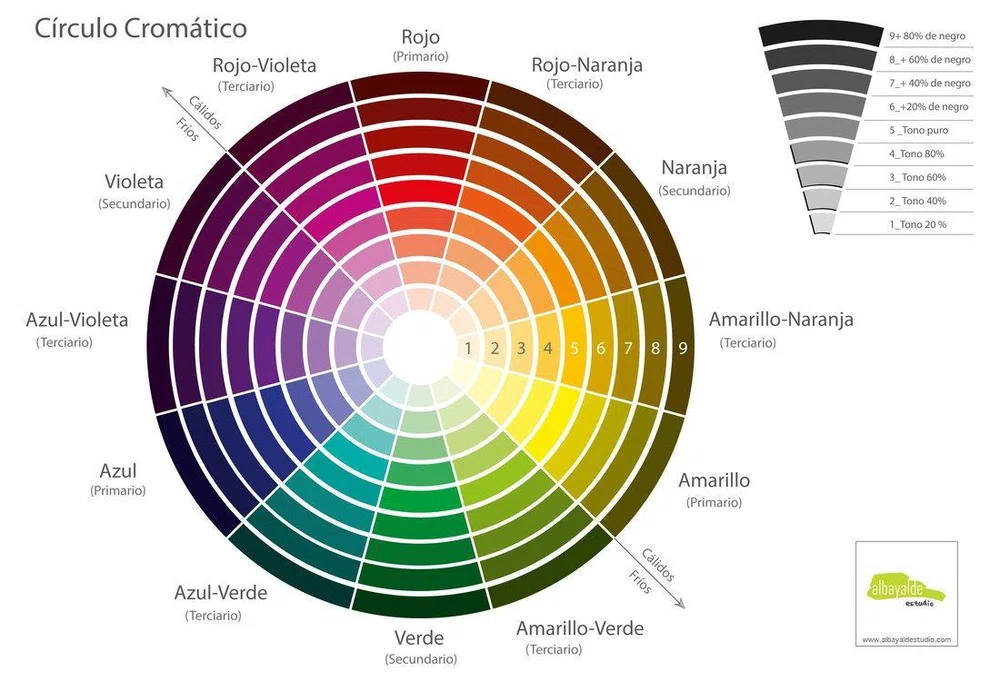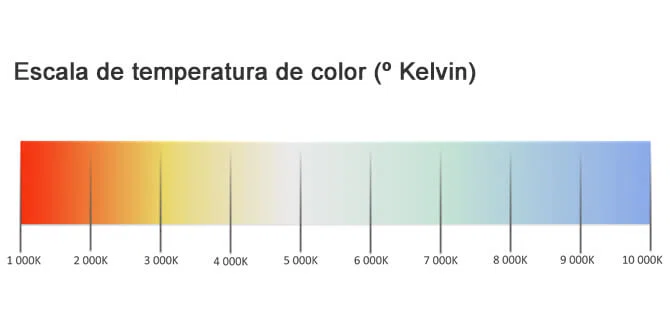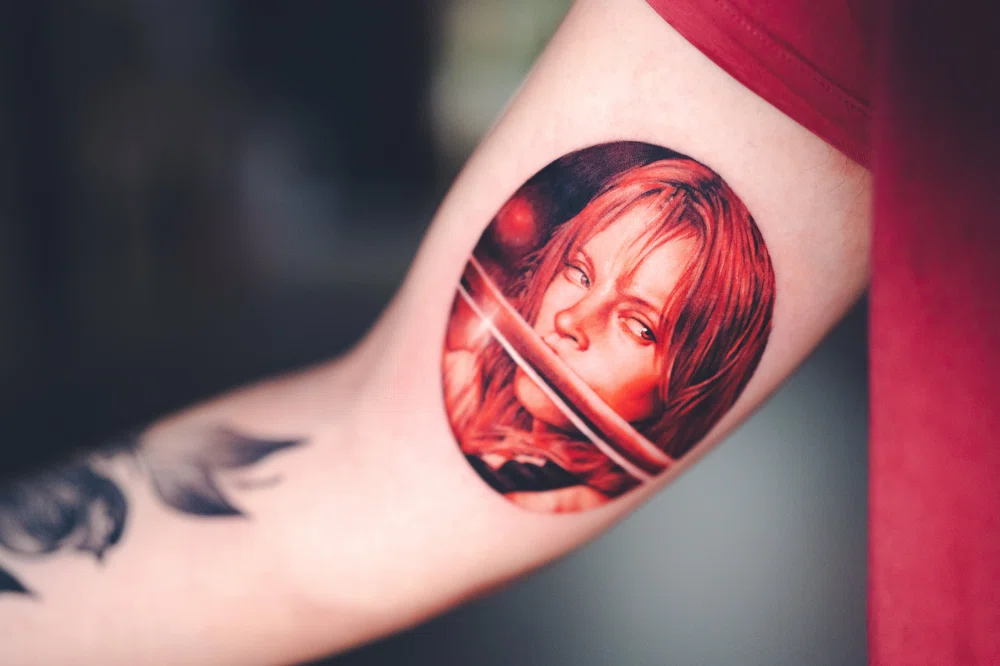The chromatic circle and its importance in colour tattoos
Tips and recommendations for tattooing in colour
06 May 2024
Colour tattoos are becoming increasingly popular, with artists showcasing their skills in various styles and techniques. However, mastering colour requires great skill from the tattoo artist. While tattoo styles can differ significantly, some specific rules are common.
If you're here, it's because you want to experience everything about colour tattoos. Don't worry; we’ll tell you all the secrets you need to know.
Let's get started!
What is the chromatic circle?
The chromatic circle is a guide that includes all the colours that humans can perceive with their eyes. This spectrum of colours is called the visible colour spectrum.

For any visual artist, knowing and studying the chromatic circle is essential. This makes it easier to understand colour and create colour tattoos. Therefore, it is crucial to study some key theoretical issues related to the theory of colour for the learning process.
The chromatic circle consists of three primary colours, red, blue, and yellow. Combining these colours creates different shades. Thus, the circle is completed with 12 basic shades, all of which are divided into large groups:
- Primary colours: yellow, red, and blue - pure pigments that form all other colours.
- Secondary colours: green, orange, and purple.
- Tertiary colours: orange-yellow, orange-red, purplish-red, bluish-violet, dark green, and light green.
Each of these colours can vary in saturation and luminance. To vary luminance, the hue is mixed with black or pure white, while saturation is achieved by mixing it with grey. This way, the same tone can produce a much wider range of colours.

Another crucial factor in colours is temperature, which can be either cold or warm, with each forming different colours. Warm colours have a lower temperature and are closer to orange hues, while colours with higher temperatures are closer to blue hues, making them cold tones.
The chromatic circle is divided into cold and warm tones, and understanding this is essential for colour tattooing.
Colour schemes
On the other hand, all the colours of the chromatic circle can be defined by different groups that we will call colour schemes, determined by some variants:
- Monochrome: When you only use a single hue in all its variants, both saturation and luminosity. You don't mix it with another hue.
- Analogue: This group of colours comprises a main hue and the two next to it on the colour wheel.
- Complementary: Refers to opposite tonalities. In the chromatic circle, each hue will find another colour “on the opposite pavement”: its opposite. Thus, for example, the complementary colour for orange is blue, for red, green, etc.
- Partial complementary: Here, a group of analogous colours is taken, and a complementary one is added. For example, if we take orange, we will have yellow, orange-red, and blue.
- Triadic: Such as blue, red, and yellow.
With these groups, you can design tattoos with broader criteria of composition and harmony, although, of course, you are free to create your own style.
Is there a correct voltage and needles to tattoo colour?

For some reason, it is often said that there is a “correct” measure to tattoo in colour, but the truth is that there are no universal rules for all colour tattoos because the techniques and styles are so varied. It will always depend on the design and style.
However, a common mistake among tattoo artists is to believe that the more profoundly the needles are inserted, the better the colour will adhere.
But this is not true. Instead, good colour adhesion occurs when the inks are injected into the correct skin layer.
If you inject the needle too deeply, you may cause future problems such as excessive swelling, healing problems, ink blowout, and even infection. But if you make superficial strokes, the colour will fade after a few weeks.
Therefore, always remember to tattoo in the dermis, not deeper.
The color wheel is an essential tool for every color tattoo artist; as is learning to use it to your advantage to achieve striking pieces... Something we teach you step by step, from the simplest to the most complex.
Sounds good?
Discover 5 different techniques to add color to your realistic pieces; MasterCourse: Realistic Tattooing in Color, with Coreh López.